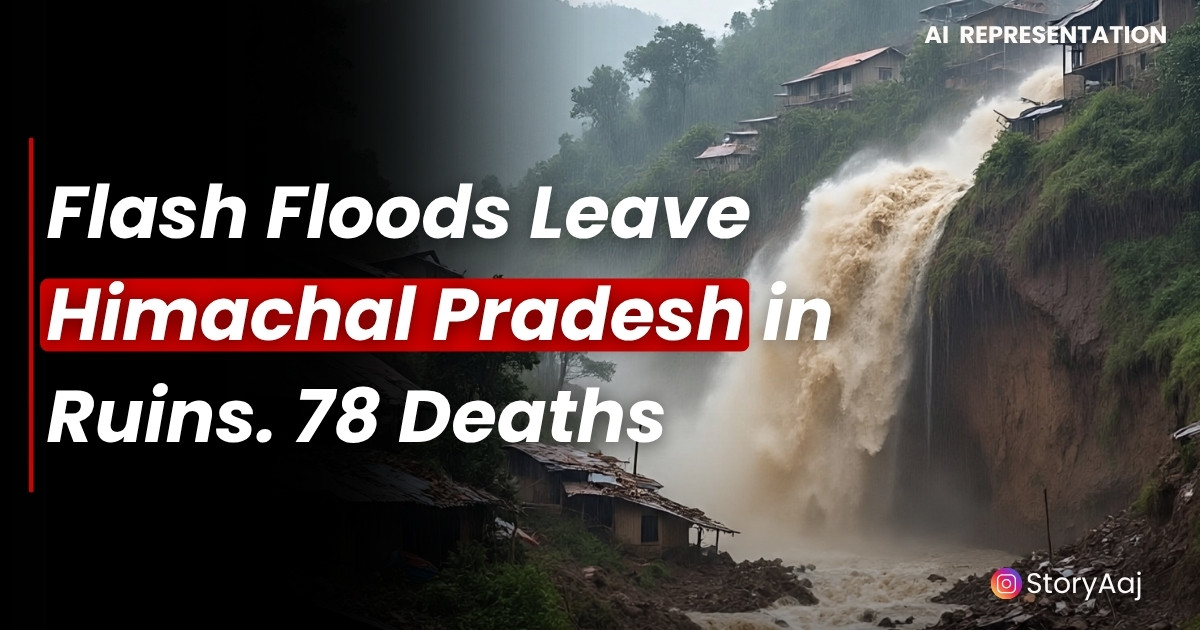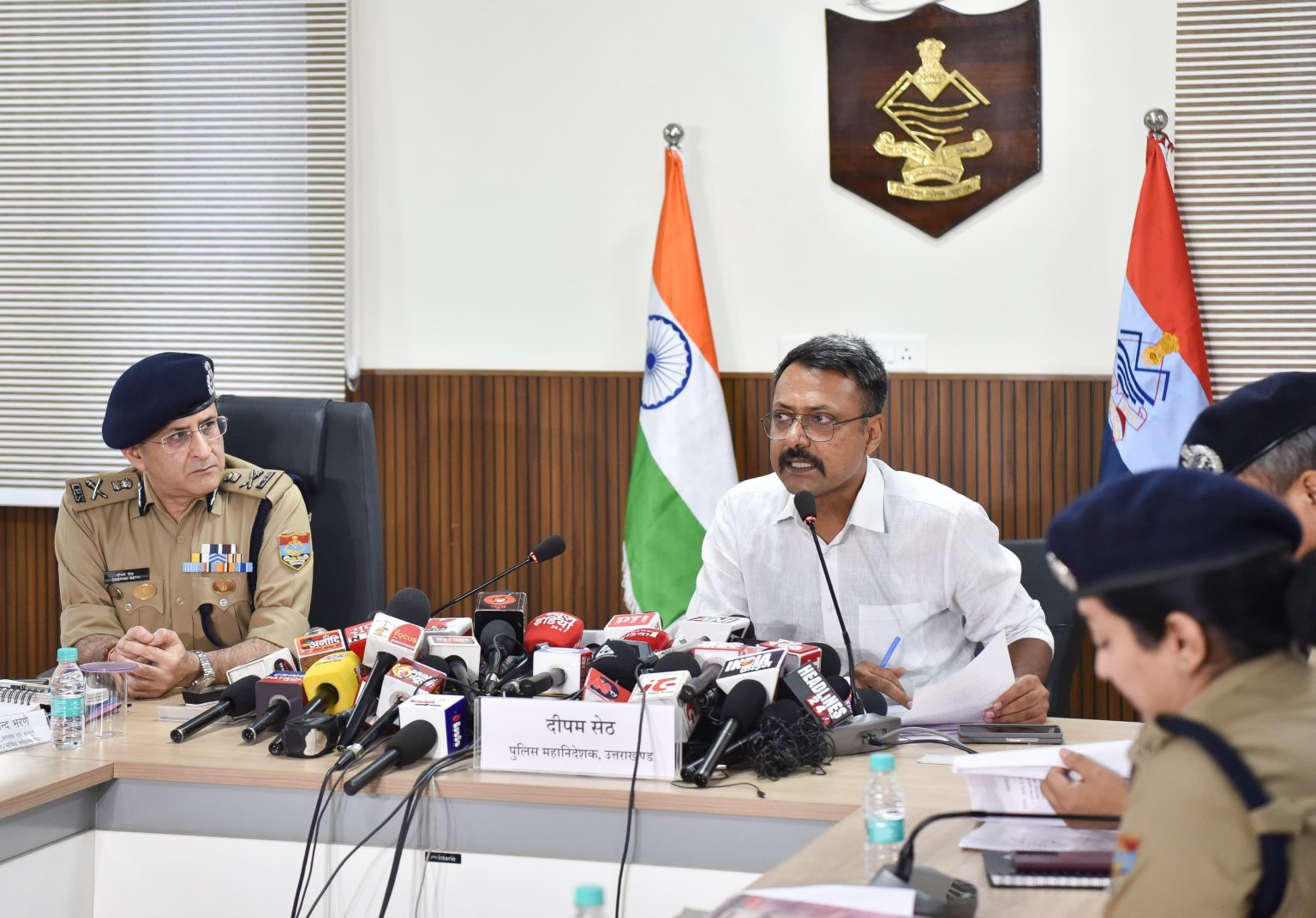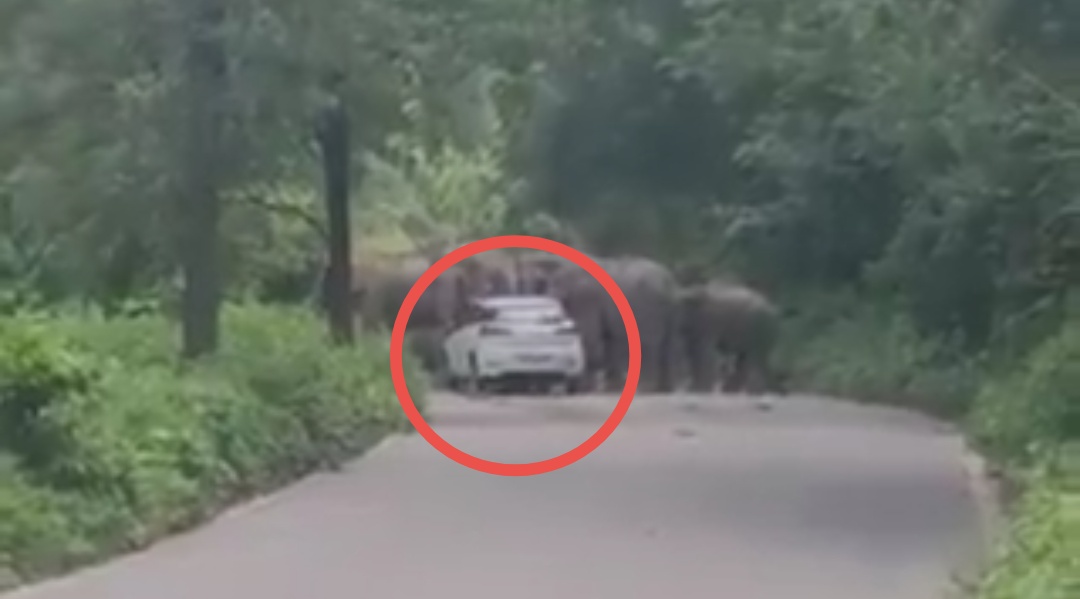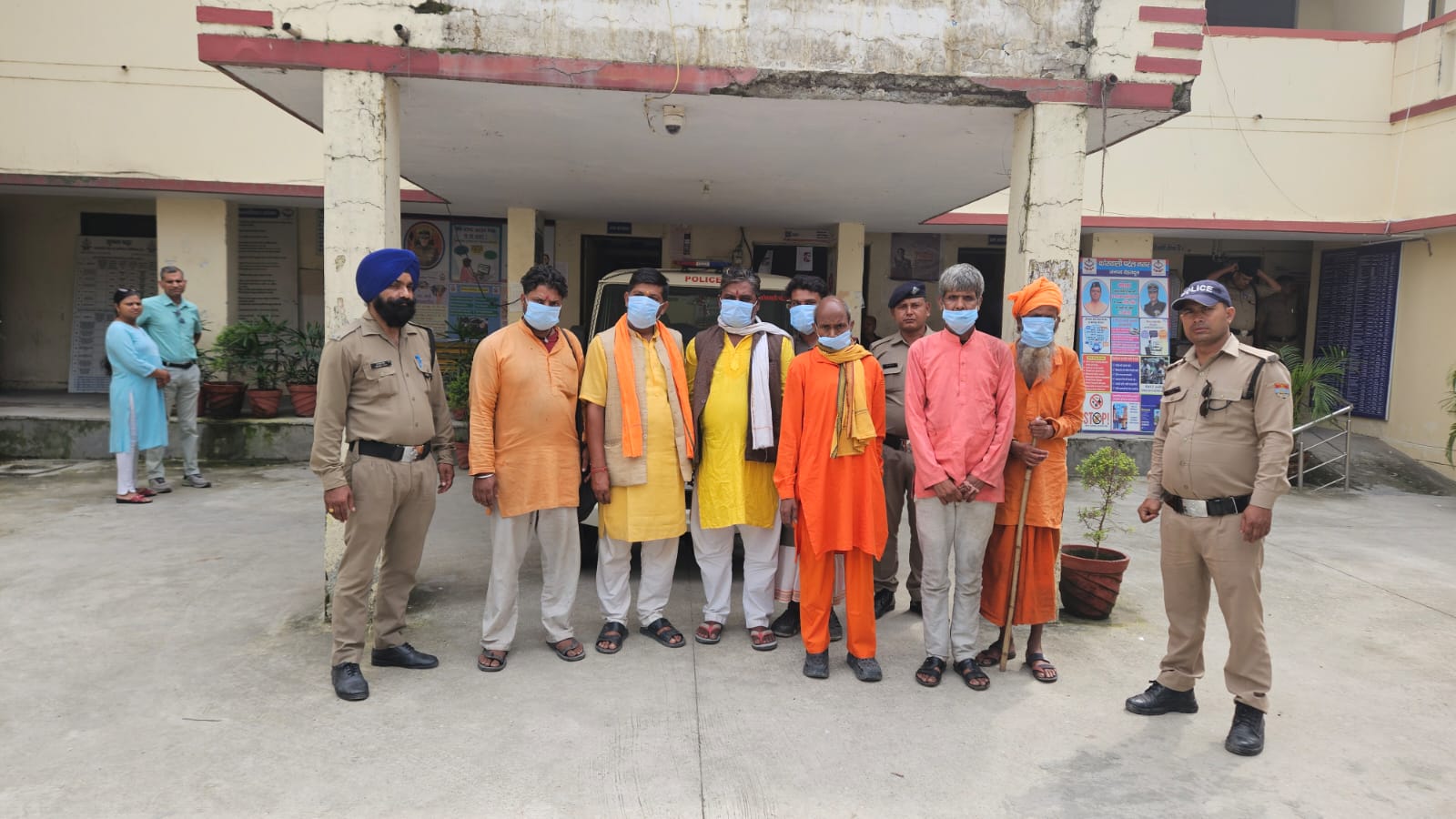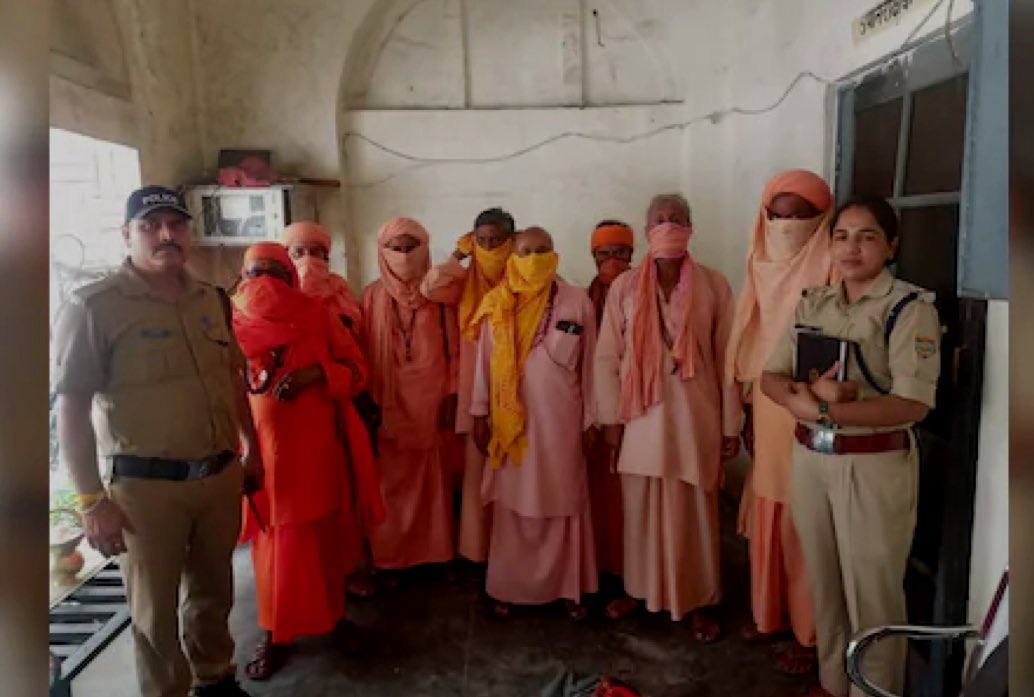The monsoon season of 2025 has unleashed devastation across Himachal Pradesh and Uttarakhand leaving communities grappling with loss of life, widespread destruction, and economic devastation.
With 78 people confirmed dead in Himachal Pradesh alone and mounting infrastructure damage exceeding ₹572 crore, the region faces one of its most challenging monsoon seasons in recent memory.
The hill state of Himachal Pradesh has witnessed 23 flash floods, 19 cloudburst incidents, and 16 landslides since the onset of the monsoon, transforming what should have been a life-giving season into a nightmare for residents. The State Disaster Management Authority (SDMA) reports that of the 78 fatalities, 50 deaths were directly caused by rain-related incidents including flash floods (14 deaths), drowning (8 deaths), and electrocution (8 deaths), while 28 people lost their lives in road accidents during the same period.
The devastation in Himachal extends beyond human casualties. Currently, 243 roads remain blocked across Himachal, with 183 of these in Mandi district alone. The infrastructure damage is staggering: 285 power transformers have been affected, 278 water supply schemes are disrupted, and 261 water projects have been forced to close.
Mandi district has emerged as the worst-affected region, accounting for the highest number of casualties and infrastructure damage. The district has reported 17 rain-related deaths, with Kangra following with 11 deaths. The destruction in Mandi is particularly heartbreaking, with entire communities cut off from the outside world and basic services completely disrupted.
One of the most striking examples of the devastation is the Himachal Cooperative Bank in Thunag, which served as the financial lifeline for a town of 8,000 residents. The bank’s first floor has been completely destroyed with cash, documents, and lockers worth crores of rupees buried under debris. The bank also contained jewellery worth lakhs of rupees, all of which remains unaccounted for. Local trader Hari Mohan described the scene: “It is an old bank and undertakes a lot of transactions every day. However, at present, the cash, documents and lockers kept in the bank have all turned into rubble”.
The scale of the disaster has prompted massive rescue operations involving multiple agencies. National Disaster Response Force (NDRF) and State Disaster Response Force (SDRF) teams have been deployed across critical regions, with 250 personnel working around the clock in the worst-affected areas. The Indo-Tibetan Border Police (ITBP) has also joined relief efforts, particularly in Thunag, working alongside local officials to clear debris and assist displaced families.
The rescue operations face significant challenges due to the mountainous terrain and ongoing weather conditions of Himachal. At least 37 people remain missing, with search operations continuing in parts of Mandi and Kullu districts. Over 115 people have been reported injured, and the numbers continue to fluctuate as rescue teams reach more remote areas.
The financial toll of the monsoon fury is staggering. Initial estimates place the total loss at over ₹572 crore, but Chief Minister Sukhvinder Singh Sukhu has warned that damages could rise to ₹700 crore as more comprehensive assessments are completed. The economic impact goes beyond immediate infrastructure damage, affecting agriculture, tourism, and daily commerce.
The destruction has severely impacted the state’s connectivity. Two national highways of Himachal are among the 243 blocked roads, cutting off entire regions from essential supplies and emergency services. The tourism sector, crucial to the state’s economy, has been particularly hard hit with hundreds of tourists stranded in various locations and many evacuation operations required.
While Himachal Pradesh battles the immediate aftermath of the monsoon devastation, neighboring Uttarakhand faces its own set of challenges. The Geological Survey of India (GSI) has issued a high-alert landslide warning for four districts: Tehri, Uttarkashi, Rudraprayag, and Chamoli covering multiple subdivisions including Ukhimath, Ghansali, Narendra Nagar, Dhanaulti, Dunda, and Chinyalisaur.
The State Emergency Operations Centre (SEOC) has directed all district magistrates, disaster management authorities, police, and State Disaster Response Force (SDRF) teams to remain on high alert. All officials have been instructed to keep their equipment and wireless sets on high alert and not switch off their phones for the next 48 hours.
The India Meteorological Department (IMD) has issued multiple alerts across both states, indicating that the worst may not be over. In Himachal Pradesh, red alerts have been issued for Sirmaur, Kangra, and Mandi districts, while orange alerts cover Shimla, Solan, Hamirpur, Bilaspur, Una, Kullu, and Chamba. The IMD forecasts “very heavy rain, thunderstorm and lightning, squall” with heavy rain expected to continue.
The weather warnings extend beyond immediate precipitation concerns. The IMD has specifically warned of flash flood risks in multiple watersheds and neighborhoods across both states, with moderate to high flash flood risk likely in various districts.
The scale of the disaster has prompted swift government action at both state and central levels. Chief Minister Sukhvinder Singh Sukhu has announced a monthly rental allowance of ₹5,000 for families who have lost their homes due to the disaster. The Chief Minister has also spoken with Union Home Minister Amit Shah regarding the damage, with assurances of all possible central assistance.
Governor Shiv Pratap Shukla has flagged off relief convoys loaded with essential supplies including 540 blankets, triple-layered tents, shoes, socks, buckets, candles, and matchboxes for the flood-affected Thunag area. The Governor has indicated that more supplies will be sent as needed, demonstrating the government’s commitment to long-term relief efforts.
As the monsoon season continues, both states face the challenge of managing ongoing relief operations while preparing for potential future disasters. The early onset of monsoon this year, arriving much earlier than the expected has caught many regions unprepared. The intensity and frequency of extreme weather events have raised concerns about climate change impacts on the fragile Himalayan ecosystem.
State officials have acknowledged the broader environmental context of these disasters. DC Rana, Special Secretary of the State Disaster Management Authority, stated: “These events are a consequence of global warming and climate change. Himachal is not untouched by these impacts”.
The devastation across Himachal Pradesh and the ongoing alerts in Uttarakhand serve as a stark reminder of the increasing vulnerability of Himalayan communities to extreme weather events. As rescue operations continue and communities begin the long process of recovery, the resilience of mountain communities will be tested like never before. The coordinated response from multiple agencies, government support, and community solidarity will be crucial in navigating through this crisis and building better preparedness for future challenges.
The monsoon season of 2025 has already etched itself into the region’s memory as one of the most destructive in recent history, with the human and economic costs continuing to mount as rescue operations proceed and the full extent of the damage becomes clear.
Follow us on Instagram – StoryAaj
Also Read : CM Pushkar Singh Dhami Joins Farmers for Hudkiya Baul
Discover more from
Subscribe to get the latest posts sent to your email.







